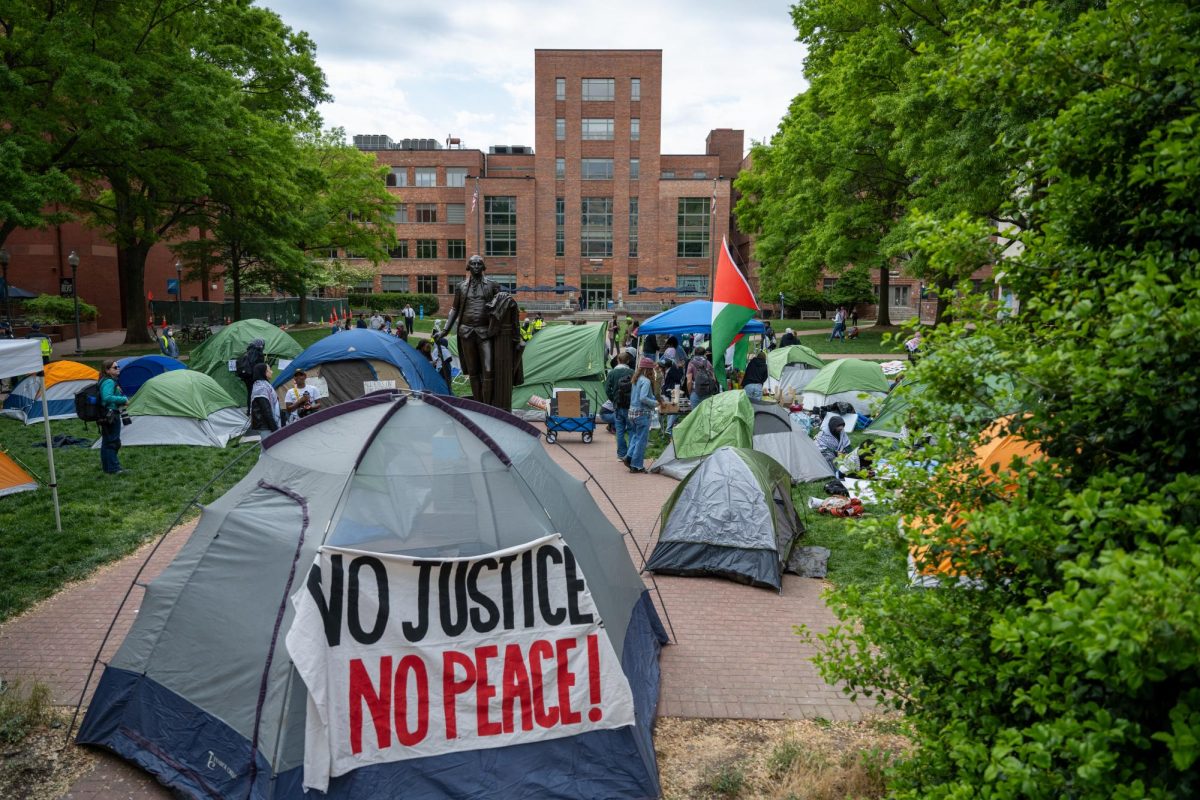Nearly 5,000 protesters, including GW students, gathered at the U.S. Supreme Court Monday to support racial integration programs that are being challenged by cases heard in the court.
The protest was organized in part by the National Association for the Advancement of Colored People and the Rev. Jesse Jackson’s religious and social development group, the Rainbow PUSH Coalition. GW students attended as members of GW’s NAACP chapter. A high school marching band played throughout the protest.
The two court cases heard, Parents Involved in Community Schools Inc. v. Seattle School District, and Meredith v. Jefferson County (Ky.) Board of Education both concern the issue of integration. In Seattle, Wash., and Louisville, Ky., students and parents list their preferable high school and are then selected based on racial quotas or a system of racial preference.
Crystal Meredith filed her case against the Jefferson County Board of Education when her white child was denied a transfer because the school needed a minority to fulfill its minimum quota of 15 percent minorities. The state also has a ceiling of 50 percent on minorities in a school. The Seattle parents are protesting city high schools’ use of race as a “tiebreaker” in transfer requests.
“If the Supreme Court rules against affirmative action, it would be a ruling against the American dream, and it would make the consideration of race, gender or ethnicity illegal,” Jackson said in a press release. He did not make a public comment at the demonstration.
Senior James Walker, president of GW’s NAACP chapter, said that while he was disappointed that Jackson did not speak, he was “excited that (GW students) came out early.”
The demonstration began at the Supreme Court around 9 a.m. Protesters were mainly students, parents and teachers from high schools and colleges and came from as far as California. There was even a group of students from London who said the issues of racial integration are international in scope.
“I think it’s great that they have high-schoolers – people of all ages. Parents and teachers are out here,” Walker said. “It’s great that they could see the process and see that what they’re doing means something.”
The protesters marched from the Supreme Court to the Lincoln Memorial a little before noon, chanting “united for equality.”
“This is the same place where they had the march on Washington . Martin Luther King spoke right on those stairs and talked about the same things that are essentially being talked about right now,” Walker added.
Junior Chasya Haagland, a member of GW’s NAACP chapter, said she is hopeful that the court will not remove the integration programs.
“Integration is important just to meet people of different ethnicities and nationalities. It would be a shame if that didn’t happen,” she said.
Nadi Bishop, a graduate student at East Carolina University, said the integration programs should remain to combat the disparities under the “separate but equal” law of segregation before the groundbreaking Brown v. Board of Education decision in 1954.
“This is where our kids should be learning and it’s the best place to teach them how to get along with people other than themselves,” Bishop said. “As opposed to us being united as a nation its going to get worse, separate but equal doesn’t work and is not possible and its going to hurt us in the long run.”
Bishop’s classmate Ashley Upchurch, a sophomore at ECU, shared the same philosophy on integration.
“I’m here to fight for all of the progress that we’ve made in the past 50 years that they’re trying to destroy and reverse,” Upchurch said.
Tourists who came to the Lincoln Monument were surprised to see 1,000 protesters gathered in front of it. However, most got over their shock quickly.
“I saw the marching band and thought ‘well, freedom of speech, there you go,” said Evan Guirsch, a tourist from Greenville, Wis. “It’s nothing really new to the city.”







